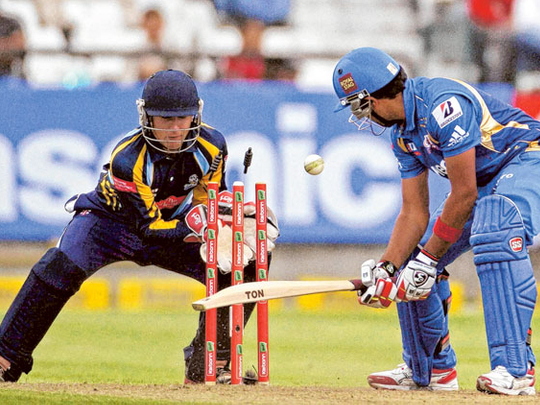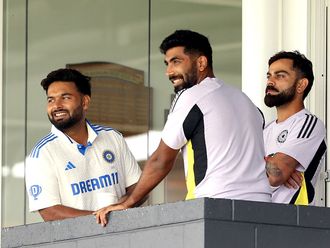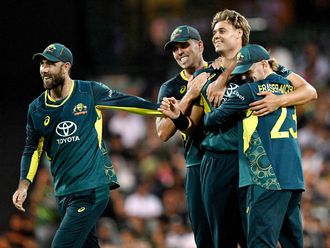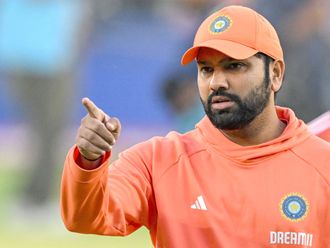
Dubai: The ongoing Champions League in South Africa has exposed the Indian Premier League (IPL) teams’ weakness in playing on fast and bouncy wickets. The Kolkata Knight Riders, who were dominant on Indian wickets and lifted the IPL title this year, became the first side to the knocked out of the Champions League. The performances of Mumbai Indians and Chennai Super Kings have also not been very impressive in the competition.
It is a known fact that Indian batsmen are suspect on really quick wickets. What has gone against the Indian teams is the fact that in South Africa it is still raining and the wickets are therefore grassy. The Johannesburg Wanderers wicket has a lot of pace and bounce this time, and in Cape Town and Durban the ball has moved a lot more than before.
Sydney Sixers, who boast genuine pacers like Pat Cummins and Mitchell Starc, have exposed the weakness of many batsmen who are unable to cope with pace and bounce. Auckland, too, have done exceedingly well because of their ability to play on wickets where the ball swings a lot.
In contrast, it was nice to see former Pakistan player Azhar Mahmoud do well for Auckland. This 37-year-old all-rounder, who plays for English county team Kent more than for his country and in the sub-continent, showed what one needs to do on such wickets through a half-century and a five-wicket haul.
Australia coach Mickey Arthur has correctly analysed the Indian batsmen and once said: “They (Indians) all have chinks in their armour. They all come with great records and fantastic scores, but if you can increase the number of dot balls one can put pressure on them.”
In Twenty20 where bowlers tend to bowl their hearts out, if the batsmen cannot get on top of the bowling, the whole team suffers. The Aussies have historically tormented the Indians with short deliveries in Test and ODI cricket on their home soil, the most recent case being India’s tour Down Under last winter. They were handed a 4-0 drubbing in the Test series and also suffered in the in the tri-series on wickets offering quite a bit of pace and movement.
So it was no wonder then that, before the start of the International Cricket Council (ICC) World Twenty20 in Sri Lanka, the Australian pacer Pat Cummins went as far as saying India players like Gautam Gambhir and Suresh Raina are batsmen who can easily fall prey to bouncy deliveries.
“We will try and ruffle a few feathers. You know, Suresh Raina and Gautam Gambhir and a few of those guys, they are never comfortable with the short ball and we are probably gonna dig in a couple of them. Hopefully, that will pay off,” he said. True enough, both Gambhir and Raina were not as impressive in Sri Lanka as they are in Indian Premier League, even on Colombo’s Premadasa wicket, which helped pacers in the early stage of the tournament.
Mitchell Starc, another Australian pace sensation, correctly predicted before the Champions League that IPL teams’ would suffer on South African wickets. It is a matter of shame for Indian batsmen, therefore, that a 22-year-old pacer can identify their weakness. In a warm-up game before the start of the league, he took three wickets for his side Sydney Sixers against Delhi Daredevils by hitting the seam hard and maintaining a good line and length.
It should be noted that the maximum number of Indian teams have been given entry into Champions league with an eye on television viewing figures. As such, Indian teams crashing out early on wickets like the ones in South Africa represents a huge blow for advertisers.
Indian batsmen’s inability to flourish on bouncy wickets has always been a matter of debate. Unfortunately, though, nothing has been done about it. With top batsmen like Sachin Tendulkar, Rahul Dravid and VVS Laxman in the India batting line-up, others with weaknesses could easily hide behind them. Today, with Dravid and Laxman having retired, it is time for a new generation of batsmen to take charge. And there is an urgent need for batsmen who can be proficient on all types of wickets.
To achieve this goal, all wickets in India must undergo a huge transformation. Though many grounds’ committees were created to achieve this objective, none of them worked towards the goal of making fast wickets for fear of India losing matches at home. Reluctance to change will result in poor displays by Indian teams and players in all international tournaments abroad.









